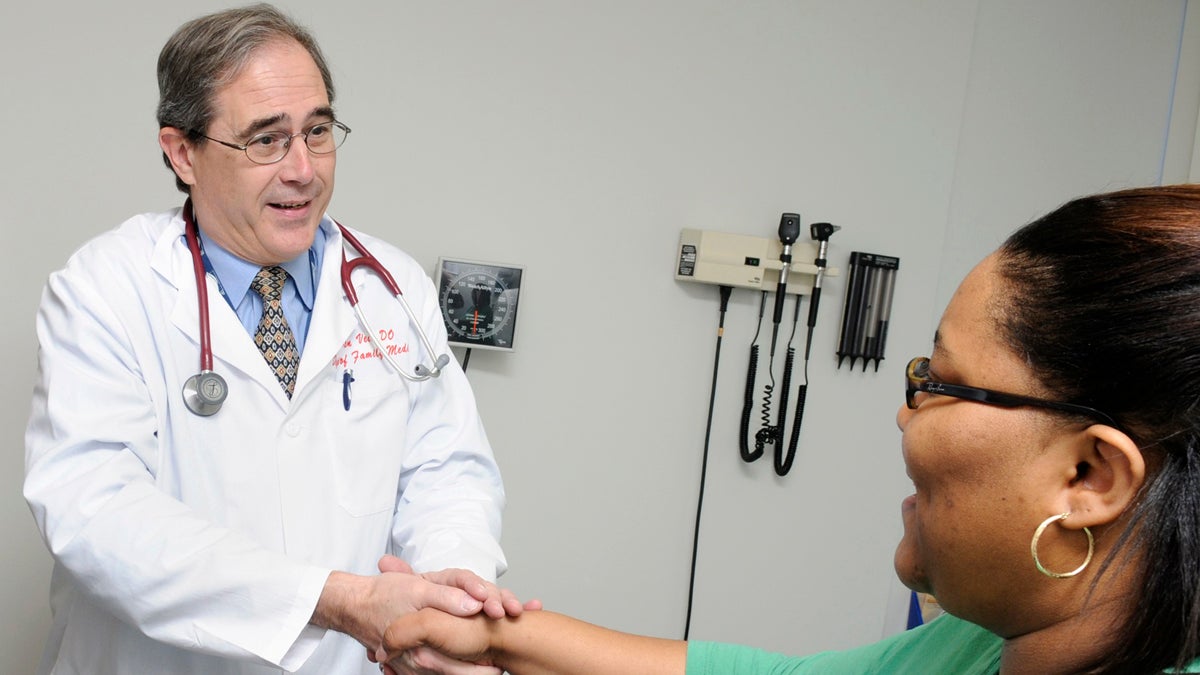Osteopathic medical field hits a growth spurt
Listen
Dr. Ken Veit
Who, exactly, are doctors of osteopathic medicine, and how are they different from other doctors?
Most people who have been to a hospital or clinic have encountered the species of medical professional known as Medicinae Doctor — M.D. for short.
Even if they aren’t familiar with the abbreviation’s Latin meaning, most people know that an MD is a doctor who has completed his or her medical training.
But today, many people are increasingly likely to encounter a different breed of doctor, called a DO, or Doctor of Osteopathic Medicine. Who, exactly, are these people? And much more importantly, are they “real” doctors?
Dr. Ken Veit, Dean of the 115-year old Philadelphia College of Osteopathic Medicine (PCOM), has heard that question so many times he offered “a pro tip” for future patients: “Don’t say, ‘oh, so you couldn’t get into any of the MD programs.'”
“When a student comes to PCOM, as opposed to an MD granting school, the curriculum looks very similar. They’ll learn all the basic sciences, they’ll have anatomy, they’ll go through four years of very intense medical training,” he said. The main difference, according to Veit, is a focus on the musculoskeletal system — “osteopathy” literally means “disease of the bones” in Greek.
In addition to conventional medical training, DOs are also instructed in something called “osteopathic manipulative therapy,” basically teaching the future doctors — and DOs are all fully-certified doctors — how to treat illnesses by using their hands. So, what does that look like in practice?
“A lot of people get sinus problems. And obviously a non-manipulation technique would treat it with antibiotics, decongestants, antihistamines,” said Veit, adding that DOs can also prescribe all of those medications. “But hopefully our DO grads would consider another addendum to that treatment, of basically taking their fingers and working the sinuses to get sinus drainage.”
The techniques, popularized in the 1800s and sometimes referred to as “manual medicine,” have drawn some controversy for lack of evidence that they are effective forms of medical treatment, similar to chiropractic medicines. But Veit says that DO colleges simply teach people to “use your hands as another tool.” He added that DOs can also “go on to other medical programs and may never use manual medicine again.” But Veit thinks Osteopathic schools offer something unique.
“With more technology and more tools, the doctor is getting further and further away from the patient,” he said. And that factor may be fueling Osteopathic medicine’s growing popularity. There were 87,300 DOs in the U.S. last year, compared to 44,000 in the year 2000.
Although MD programs have also grown over the last decade, Veit said the ratio of DO students to MDs was “growing” and that Osteopathic programs now enroll “approximately 20 percent” of all med students nationwide. “One of the things we have seen in our profession in the last 10 to 15 years is the incredible growth of our profession,” he said. “It’s the only place where manual medicine fits into the whole spectrum of medicine.”
WHYY is your source for fact-based, in-depth journalism and information. As a nonprofit organization, we rely on financial support from readers like you. Please give today.



